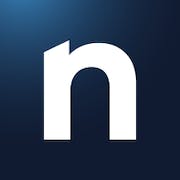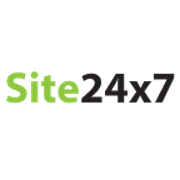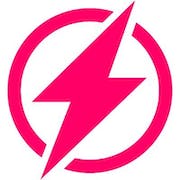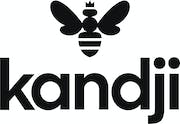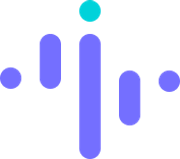Are you in search of the best remote monitoring and management software? Check out our comprehensive buyers guide, packed with expert insights to help you make the right choice that will streamline your IT operations and boost productivity.
Remote monitoring and management (RMM) software is becoming increasingly essential. With managing remote devices and networks becoming a daunting task for IT departments, RMM technology is a lifesaver. But the value of the solution extends far beyond this. It allows IT departments to be more proactive than ever in managing their networks, detecting and solving problems before they become massive threats. This type of proactive monitoring and management saves businesses significant downtime costs, improves the performance of systems and ultimately ensures that businesses are never caught off guard when it comes to their IT infrastructure. If you're considering investing in RMM software - this buyer's guide has got you covered.
What is remote monitoring and management software?
RMM software, is a system of tools used by businesses to remotely monitor and manage their IT infrastructure and devices. In simpler terms, this system allows companies to keep an eye on their technology assets and receive alerts when any issues arise. It is highly beneficial as it can help detect problems before they cause downtime or affect business operations.
Some of its common use cases include:
- Monitoring and managing servers, workstations, and other devices remotely.
- Ensuring software and system updates are implemented in a timely manner.
- Ensuring that security patches are up-to-date to prevent security breaches.
- Protecting against malware, viruses, and other cyber threats.
- Automating routine tasks, such as backups and maintenance.
- Generating reports on device and network health.
A wide variety of companies, from small businesses to large enterprises, rely on RMM software solutions to keep their IT infrastructure running smoothly. Managed service providers (MSPs) are some of the biggest users of this powerful tool, as they use it to manage their clients' IT environments remotely. Research shows that there is an expected 94% in the number of MSPs employing RMM platforms in the near future. In addition, the application is commonly used by healthcare providers, financial service providers, educational institutions, and government agencies to monitor their networks and devices.
Key benefits of a remote monitoring and management solution
With the rise of remote work and an ever-increasing reliance on technology, managing IT systems has become more important than ever before and for IT systems to function optimally, RMM technology offers a wide range of benefits and here are the main ones:
- Early detection and resolution of technical issues: RMM software proactively monitors your IT systems and alerts you when something is wrong, even before your employees notice something is amiss. This means that your IT team can quickly resolve any issues before they become bigger, more costly problems.
- Increased uptime and productivity: When your IT systems are functioning efficiently, your employees can focus on their work rather than dealing with technical issues. This leads to increased productivity, which ultimately benefits your bottom line.
- Enhanced security: An RMM package can help protect your business from cyber threats by identifying potential security risks and alerting you to vulnerabilities before they can be exploited. This can help prevent data breaches and other security incidents that could be costly for your business.
- Cost savings: The solution can help you save money in several ways. By detecting and resolving issues early, you can avoid costly downtime and minimize the need for expensive emergency repairs. You can also save money by automating routine maintenance tasks and avoiding the need for manual intervention.
10 key features of a remote monitoring and management tool
These software solutions typically come loaded with a wide range of features designed to streamline IT management and enhance productivity and here are the 10 common ones to look out for:
1. Monitoring and alerting:
RMM software makes it possible to monitor all your IT assets remotely and receive timely alerts when something goes wrong.
2. Endpoint management:
RMM tools enable IT teams to manage endpoints such as laptops, desktops, mobile devices, and servers from a centralized location.
3. Patch management:
Keeping software and operating systems up to date is critical for maintaining security and preventing downtime. This technology automates the process of patch management, ensuring all endpoints are up to date.
4. Remote access:
It provides IT teams with remote access capabilities to troubleshoot and fix issues quickly and efficiently.
5. Inventory management:
An RMM solutionhelps build an inventory of all hardware and software assets for better asset tracking and management.
6. Backup and disaster recovery:
The program provides automated backup and disaster recovery capabilities to ensure business continuity in the event of a catastrophic event.
7. Security management:
It enables IT teams to monitor and manage security endpoints, including antivirus software, firewalls, and intrusion detection systems.
8. Reporting and analytics:
A remote monitoring platform generates reports and analytics to provide insightful data about endpoint status, performance, and potential issues.
9. Automation:
It alsoautomate many routine tasks such as software updates, patches, and backups, leading to increased efficiency and productivity.
10. Integration:
A remote management tool can integrate with other tools and applications, such as service desk tools, to create a comprehensive IT management suite.
Main considerations when adopting an RMM platform
To address different challenges associated with remote work, businesses have turned to remote monitoring technology, however, not all of these solutions are created equal, and businesses must carefully consider various factors before investing in one. Let us explore what these factors are and why they matter:
Ease of use
One of the most crucial factors to consider when choosing the right RMM solution is its ease of use. The tool should be user-friendly and intuitive, allowing IT teams to manage and monitor endpoints efficiently. Nobody wants to spend hours on end training their team on how to use the software, and ultimately want to deploy the solution quickly.
Application integration
For any business, having tools that work seamlessly is critical to the smooth running of operations. When purchasing an RMM app, businesses must consider whether it integrates with other applications such as PSA and CRM software. This will provide greater visibility into the performance of these systems.
Quality of technical support
It is essential to choose a program that comes with reliable technical support. The quality of customer support can make or break your experience with the system. Therefore, ensure that the provider offers excellent customer service and support, including onboarding, troubleshooting, and regular software updates.
Security
Security always remains a top concern for any business. When choosing this program, businesses must prioritize security features, policies, and protocols. Ensure the remote communication channels are encrypted, and data stored in the database is safely secured.
Customizability
Every business is unique, and therefore, their IT requirements differ significantly. Hence, customizable RMM packages can cater effectively to the specific needs of a varied customer base. When choosing the right one, businesses must consider its ability to customize the software to their unique business requirements.
Pricing
The cost of a remote management tool varies depending on the provider, the features, and the number of endpoints to be monitored. As such, it's important to assess your financial capability and the ROI of each solution before making your decision. Remember that using a cheaper option might be ideal in the short term, but this could mean incurring hidden costs or losing critical functionalities in the long term.
Industry trends for remote monitoring and management software
- The global RMM tools market size was valued at USD 841.9 million in 2022 and is projected to reach USD 2010.36 million by 2032, showing significant growth at a compound annual growth rate of 9.1% during the forecast period. As technology continues to advance, RMM is expected to evolve and some of the biggest trends in this field for the next few years include the ones outlined below:
- One of the most significant trends is the integration of AI and machine learning in RMM software. This will enable companies to automate routine tasks, reduce errors in monitoring, and improve efficiency considerably. Another trend to watch out for is the internet of things (IoT), which will lead to the growth of connected devices in the workplace.
- Automation is also becoming increasingly essential to streamline repetitive tasks and provide quicker responses to issues. With automation, RMM platforms can diagnose problems and instantly resolve them without the need for human intervention.
- Lastly, improved cybersecurity measures are another significant trend expected to shape the RMM landscape this year and beyond. As hackers continue to launch sophisticated cyber attacks, RMM software developers are looking to integrate better security protocols to ensure the protection of sensitive data.
Conclusion
In conclusion, remote monitoring and management technology has become an indispensable tool for businesses seeking to maintain the health, security, and efficiency of their IT infrastructure. Investing in a robust RMM solution not only enhances operational efficiency but also fortifies your cybersecurity defenses, enabling your business to thrive in an increasingly digital landscape. Remember, the right RMM platform can transform how you manage your IT assets, providing peace of mind and allowing you to focus on strategic initiatives that drive growth and innovation.


